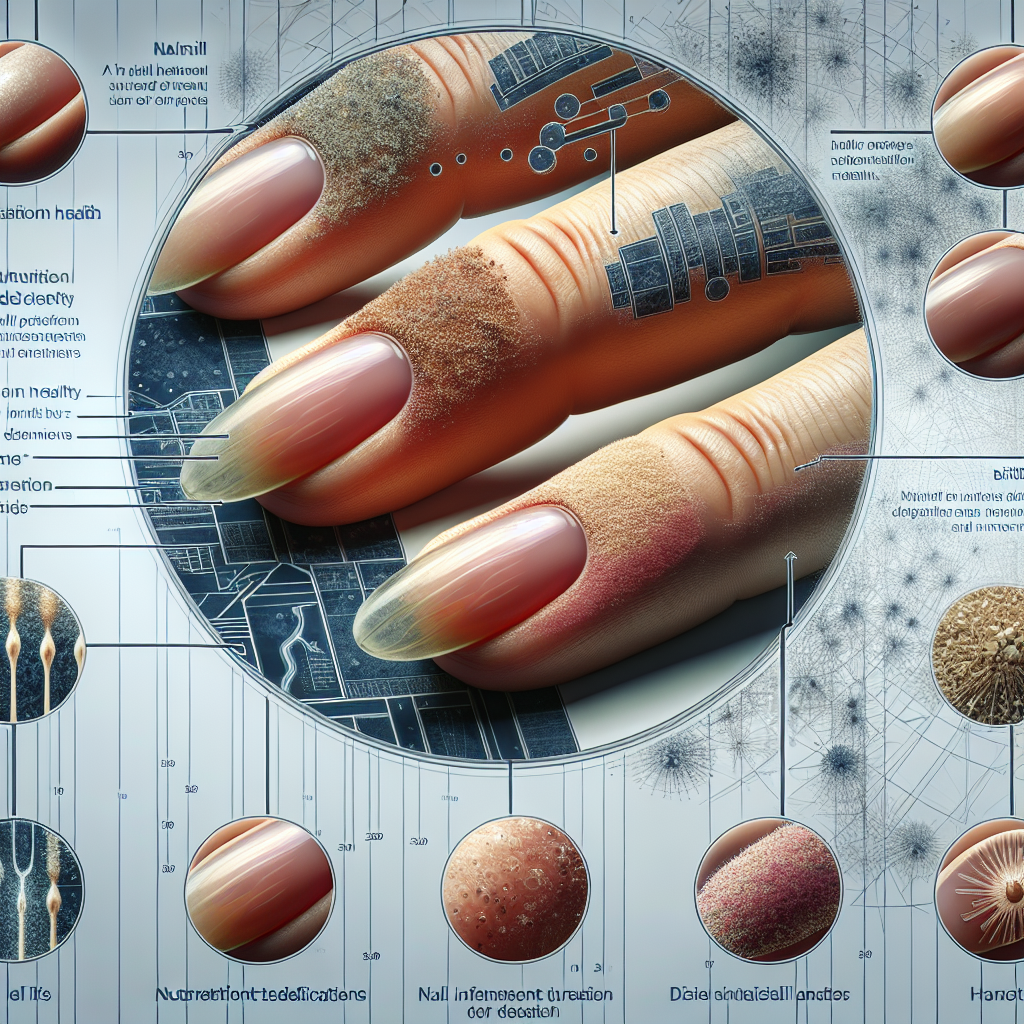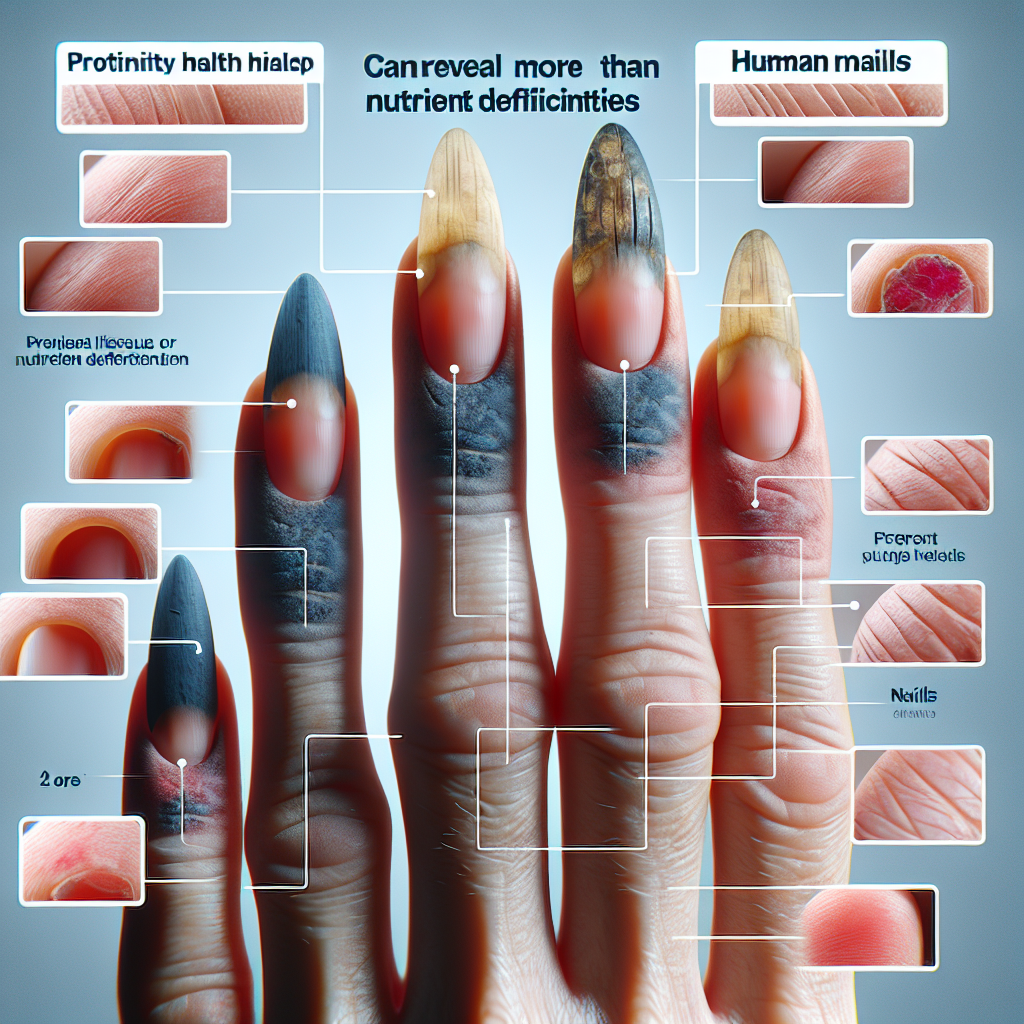Why Your Nails Reveal More Than Just Nutrient Deficiencies

Discover the secrets your nails are telling about your health! Your nails reveal more than just nutrient deficiencies. Learn more about what your nails say about your overall health. Click here to uncover the truth.
Unveiling the Secrets: How Your Nails Reflect More Than Just Nutrient Deficiencies
Your nails, often considered a mere aesthetic feature, are in fact, a window to your overall health. They reveal more than just nutrient deficiencies; they can provide significant insights into your body’s internal workings. From indicating systemic diseases to signaling lifestyle issues, your nails can be a valuable tool in understanding your health.
The most common perception about nail health is that it’s directly linked to nutrient deficiencies. Indeed, brittle nails can be a sign of iron deficiency, while white spots may indicate a lack of zinc. However, the story your nails tell extends far beyond just nutritional inadequacies.
For instance, nail changes can be an early sign of systemic diseases. Clubbing, a condition where the fingertips enlarge and the nails curve around the fingertips, can be a sign of lung disease. Similarly, Beau’s lines, which are indentations that run across the nails, can indicate diabetes or peripheral vascular disease. Furthermore, nail pitting, characterized by small depressions on the nail surface, can be a sign of psoriasis or other skin conditions.
In addition to systemic diseases, your nails can also reflect your lifestyle habits. For example, yellow nails can be a sign of excessive smoking. On the other hand, white nails can indicate liver diseases, such as hepatitis. Moreover, frequent nail biting, a common stress-related habit, can lead to infections and other nail problems.
Interestingly, your nails can also provide clues about your heart health. For instance, Terry’s nails, where most of the nails appear white except for a narrow pink band at the top, can be a sign of liver disease, congestive heart failure, or diabetes. Similarly, half-and-half nails, where the bottom half of the nail is white and the top half is brown, can indicate kidney disease.
Moreover, your nails can even reflect your mental health. For instance, severe stress or anxiety can lead to nail biting or picking, which can damage the nail bed and lead to other nail problems. In some cases, severe depression can even cause nails to grow slowly or stop growing altogether.
However, it’s important to note that while your nails can provide valuable insights into your health, they are not a definitive diagnostic tool. Many nail abnormalities are harmless and can be due to factors such as aging, injuries, or exposure to harsh chemicals. Therefore, if you notice any significant changes in your nails, it’s always best to consult a healthcare professional.
In conclusion, your nails are more than just a canvas for nail polish or a tool for opening soda cans. They are a reflection of your overall health, providing clues about systemic diseases, lifestyle habits, heart health, and even mental health. So, the next time you look at your nails, remember that they might be trying to tell you something about your health. Pay attention to their color, texture, and shape, and don’t hesitate to seek medical advice if you notice any significant changes. After all, your nails are not just about beauty, they are about health too.
Beyond Nutrient Deficiencies: What Your Nails Say About Your Overall Health

Your nails, often considered a mere aesthetic feature, can be a window into your overall health. Beyond indicating nutrient deficiencies, they can reveal a plethora of information about your body’s wellbeing.
The condition of your nails is influenced by various factors, including your diet, lifestyle, and overall health. While it’s common knowledge that brittle, discolored, or ridged nails can signal nutrient deficiencies, such as a lack of iron or biotin, there’s more to the story. Your nails can also provide valuable insights into more serious health issues, acting as an early warning system for conditions that may otherwise go unnoticed.
For instance, pale or white nails can be a sign of anemia, a condition characterized by a lack of red blood cells. On the other hand, yellow nails can indicate a respiratory disease, such as chronic bronchitis. Furthermore, if your nails are thick and yellow, it could be a sign of a fungal infection.
In some cases, nail changes can signal systemic diseases. For example, nail clubbing—where the tips of your fingers enlarge and your nails curve around the fingertips—can be a sign of lung disease. Similarly, Terry’s nails, where most of the nails appear white except for a narrow pink band at the top, can be associated with liver disease, congestive heart failure, or diabetes.
Moreover, your nails can also reflect your heart health. Red streaks or lines under the nail bed, known as splinter hemorrhages, can be a sign of heart valve infection or vasculitis. Meanwhile, Beau’s lines—indentations that run across the nails—can indicate a history of severe illness, infection, or injury, including a heart attack.
In addition to systemic diseases, nail abnormalities can also hint at skin conditions. Psoriasis, a chronic skin condition, often manifests as pitted or dented nails. On the other hand, lichen planus, an inflammatory condition, can cause ridges or grooves on the nails.
It’s important to note that while these signs can indicate potential health issues, they are not definitive diagnoses. Many nail abnormalities are harmless and can be attributed to aging, trauma, or environmental factors. However, if you notice significant changes in your nails, it’s advisable to consult a healthcare professional. They can help determine whether these changes are a cause for concern or simply a cosmetic issue.
In conclusion, your nails are more than just a canvas for polish or a tool for scratching. They are a reflection of your overall health, capable of revealing potential health issues ranging from nutrient deficiencies to systemic diseases. By paying attention to your nails, you can gain valuable insights into your body’s wellbeing and take proactive steps towards maintaining good health. So, the next time you look at your nails, remember—they’re not just about beauty, they’re about health too.
The Hidden Messages in Your Nails: More Than Just Signs of Nutrient Deficiencies
Your nails, often considered a mere aesthetic feature, are in fact, a window to your overall health. They reveal more than just nutrient deficiencies; they can provide vital clues about your body’s internal workings. From indicating serious health conditions to reflecting your stress levels, your nails are a veritable health barometer.
Traditionally, we associate nail changes with nutrient deficiencies. For instance, brittle nails often suggest a lack of biotin, while white spots might indicate a zinc deficiency. However, the story your nails tell extends far beyond these nutritional aspects. They can signal systemic diseases, metabolic disorders, and even psychological stress.
One of the most common systemic diseases that your nails can hint at is diabetes. People with diabetes often have yellowish nails, a condition known as yellow nail syndrome. This is due to the high glucose levels in their blood, which can cause the nails to change color. Similarly, liver diseases can also manifest in your nails. Terry’s nails, a condition where the nails appear white with a characteristic “ground glass” appearance, is often associated with liver cirrhosis.
Furthermore, your nails can also indicate cardiovascular issues. Clubbing, a condition where the fingertips enlarge and the nails curve around the fingertips, is often seen in people with heart diseases or lung cancer. On the other hand, Beau’s lines, horizontal ridges across the nails, can suggest a previous severe illness, injury, or emotional stress. This is because any significant stress on the body can temporarily halt nail growth, leading to the formation of these lines once the nails start growing again.
In addition to physical health, your nails can also reflect your mental well-being. Chronic nail-biting, medically known as onychophagia, is often linked to anxiety and stress. It’s a common response to nervous stimuli and can become a habitual coping mechanism during stressful times. Moreover, severe and prolonged stress can also lead to other nail changes like ridges, white spots, or discoloration.
However, it’s important to remember that while your nails can provide valuable health insights, they are not a definitive diagnostic tool. Many nail abnormalities are harmless and can result from minor injuries or infections. Therefore, any significant or persistent changes in your nails should be evaluated by a healthcare professional. They can help determine whether these changes are a sign of an underlying health issue or merely a cosmetic concern.
In conclusion, your nails are more than just a canvas for colorful polishes or a tool for opening soda cans. They are a reflection of your body’s internal health, providing subtle hints about potential health issues. From signaling systemic diseases to reflecting your stress levels, your nails are a health indicator that should not be overlooked. So, the next time you notice a change in your nails, don’t dismiss it as a mere cosmetic issue. It might be your body’s way of telling you that something is amiss.